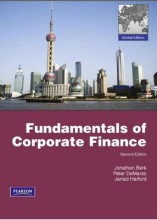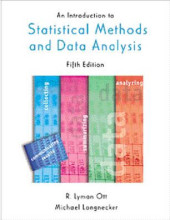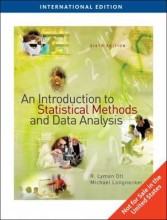Summary: Macroeconomics | 9780273769958 | Manfred Gärtner
- This + 400k other summaries
- A unique study and practice tool
- Never study anything twice again
- Get the grades you hope for
- 100% sure, 100% understanding
Read the summary and the most important questions on Macroeconomics | 9780273769958 | Manfred Gärtner
-
1 Macroeconomic Essentials
-
1.2 Essentials of macroeconomic accounting
This is a preview. There are 4 more flashcards available for chapter 1.2
Show more cards here -
What are the three main reasons not all salary paid flows back to the firms?
- People save
- Government levy taxex
- People buy from foreign firms -
What are the three main injections into the circular flow upping the domestic aggregate output?
- Firms invest
- Government spending
- Foreigners buy goods -
What equation involving all three leakages and injections, paired up, holds at all times?
(S-I) + (T-G) + (IM-EX) = 0 -
What are the public net savings? (circular flow)
The balance of T-G -
What are the net exports? (circular flow)
The balance of IM-EX -
When do we speak of a country in 'twin deficit'?
When both the government budget and the current account are in deficit -
1.2.1 Money in the circular flow
This is a preview. There are 1 more flashcards available for chapter 1.2.1
Show more cards here -
What is nominal income?
Income expressed in currency -
What is the quantity equation?
M x V = P x Y -
When do we have inflation whilst looking at the quantity equation?
When the pricelevels increase faster than the money supply -
When the aggregate supply curve is vertical,what influence does changes in price levels have on production?
Zero, since the supply curve is vertical, it will produce that amount no matter the prices
- Higher grades + faster learning
- Never study anything twice
- 100% sure, 100% understanding
Topics related to Summary: Macroeconomics
-
Macroeconomic Essentials - Essentials of macroeconomic accounting - The government budget and the balance of payments
-
Booms and recessions (I): The Keynesian Cross
-
Money, interest rates and the global economy - The money market, the interest rate and the LM curve
-
Exchange rate and the balance of payments - The exchange rate and the balance of payments
-
Exchange rate and the balance of payments - Back to IS-LM: enter the FE curve
-
Potential income and the labour market - The classical labour market - Labour demand
-
Potential income and the labour market - The classical labour market - Labour supply
-
Enter aggregate supply - Why is there unemployment in equilibrium?
-
Enter aggregate supply - Why may actual output deviate from potential output?
-
Booms and recessions (III): aggregate supply and demand - The short-run aggregate supply curve
-
Booms and recessions (III): aggregate supply and demand - The AD-AS model: basics
-
Booms and recessions (IV): dynamic aggregate supply and demand - Equilibrium income and inflation: the DAD curve
-
Booms and recessions (IV): dynamic aggregate supply and demand - The DAD-SAS model
-
Booms and recessions (IV): dynamic aggregate supply and demand - Inflation expectations
-
Booms and recessions (IV): dynamic aggregate supply and demand - The DAD-SAS model at work
-
Economic growth (I): basics - The production function and growth accounting
-
Economic growth (I): basics - Growth theory: the Solow model
-
Economic growth (I): basics - Why incomes may differ
-
Economic growth (I): basics - What about consumption?
-
Economic growth (I): basics - Population growth and technological progress
-
Endogenous economic policy - What do politicians want?
-
Endogenous economic policy - Political business cycles
-
Endogenous economic policy - Rational expectations
-
Endogenous economic policy - Policy games
-
Endogenous economic policy - Ways out of the time inconsistency trap
-
Inflation and the central bank independence - Inflation, central bank independence and the EMS

































